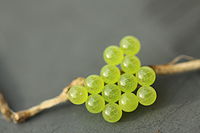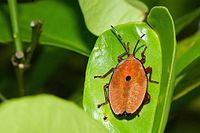| Musgraveia sulciventris | |
|---|---|
 | |
| Scientific classification | |
| Domain: | Eukaryota |
| Kingdom: | Animalia |
| Phylum: | Arthropoda |
| Class: | Insecta |
| Order: | Hemiptera |
| Suborder: | Heteroptera |
| Family: | Tessaratomidae |
| Genus: | Musgraveia |
| Species: | M. sulciventris |
| Binomial name | |
| Musgraveia sulciventris Stål, 1863 | |
| Synonyms | |
Oncoscelis sulciventris | |
Musgraveia sulciventris is a Tessaratomid bug found in Australia, sometimes known as the bronze orange bug. It is considered a pest, particularly to plants in the citrus group. [1] Bronze orange bugs suck the sap from trees, which causes the flowers and fruit to fall. [2] [3]



